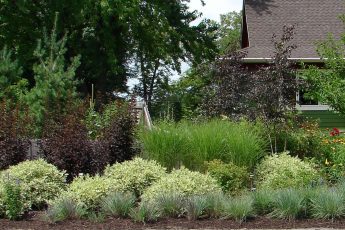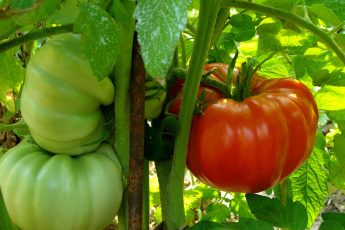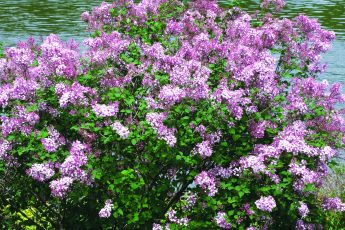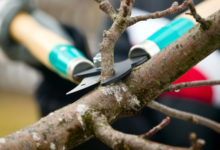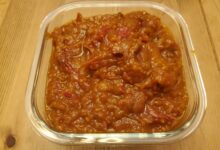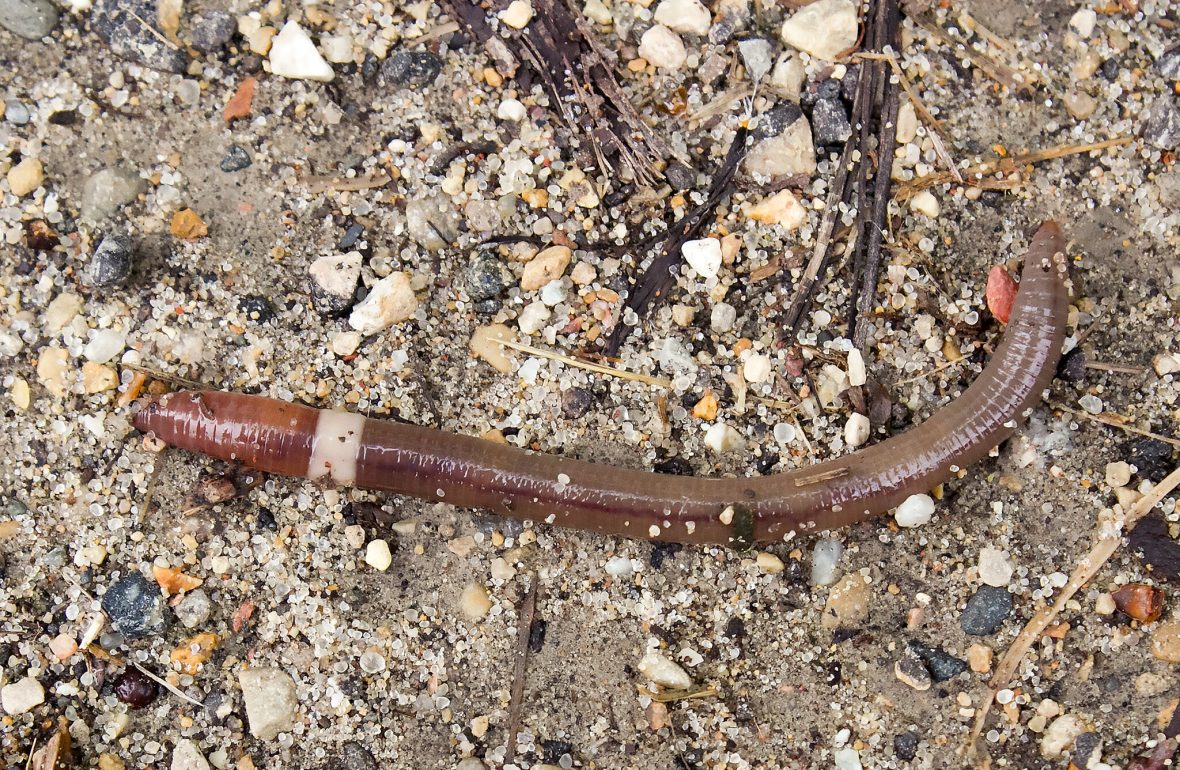
Asian Jumping Worms – Amynthas spp. (A. agrestis and A. tokioensis) are a non-native species of earthworms. Like their European cousins, Asian Jumping Worms were inadvertently introduced to North America through settlement and trade. While European earthworms have been present in North America for hundreds of years, Asian earthworms have just recently been discovered and have a greater, negative impact on our local eco-system.
Distinguishing Characteristics
Asian Jumping worms display many similarities to European earthworms however, there are a few very distinct differences in appearance and behavior.
- A Jumping worm’s clitellum or band across the worm’s body is located on the lower segments of the worm’s body and has a smooth, milky white appearance. European earthworms’ clitellum appears higher on the body and have a raised, darker appearance.
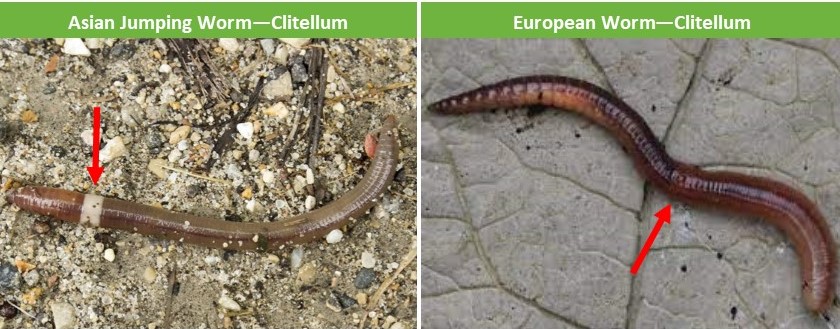
- Asian Jumping worms are also called snake worms or crazy worms due to their active jumping/wiggling behavior when disturbed, unlike European earthworms which are characterized by slower movement.
- Another means to detect the presence of Asian Jumping worms is by their castings which resemble coffee grounds. In large Jumping worm concentrations, these castings will be found on the surface of soil.
Why the Concern?
It is important to note, all earthworms in Minnesota are non-native and considered invasive. Earthworms change the structure of our soil and reduce the natural “duff” layer in our forests. This layer comprised of organic material feeds forest seedlings, native wildflowers, provides habitat for ground-dwelling animals and reduces soil erosion.
Asian Jumping worms are of high concern simply put, because they are faster and hungrier than their European relatives. European earthworms move at a rate of about a half mile in a hundred years, Asian worms have the ability to colonize up to thirty acres in one season! In addition to their speed, Asian Jumping worms have a very high metabolism and will eat a greater amount of organic material including wood chips and mulch. The only, current approved defense against Asian Jumping worms is heat (130 degrees) and prevention.
What are We Doing
Through the sustainable landscapes we design and install, the environmentally responsible products we sell and the education we provide to our Clients and Guests, we are committed to the preservation of our local ecology. We will continue to prevent, monitor for and receive ongoing education as it becomes available from the Minnesota Department of Natural Resources and the Minnesota Nursery and Landscape Association.
Applied Practices Today
- Using reputable and responsible vendors who heat treat their mulch, compost and soil.
- Use clean, bagged soils to produce and grow our plant material.
- Turn our bulk mulch, soil and compost frequently.
- Store all bagged mulch and soils up on pallets.
- Diligently scout all areas on campus for worms and castings.
- Client site monitoring by Field Staff.
- All Field Staff equipment, boots and shoes thoroughly sanitized.
What can You Do?
As a homeowner, observation and prevention are currently the best methods against Asian Jumping worms. In addition to their rapid movement, human interaction is the greatest mode of transport contributing to the spread of Asian Jumping worms.
Observe
- Scout your landscape for the presence of worms and their castings. Asian Jumping worms do not burrow as deep as European earthworms and can be found in the top two to four inches of soil.
- If you suspect the presence of Jumping worms on your property, take photos and submit with your location to the Midwest Early Detection Network or Minnesota Department of Natural Resources.
Prevent
- Do not move soil, sod, compost or mulch from one place to another.
- Buy landscape materials from responsible Garden Centers.
- Do not share plants or if you must share, only share “clean” bare-rooted plants or plants potted in a sterile (soil-less) potting medium.
- Leave recently purchased plants in their pots for a few days before planting. Observe the soil in the pots prior to planting observing any change that resembles fine, coffee grounds.
- Clean the soil off of gardening tools, equipment and clothing.
- Buy worms sold for fishing bait from responsible vendors and properly dispose of unused bait.
Additional Resources
Minnesota Department of Natural Resources
The University of Minnesota


